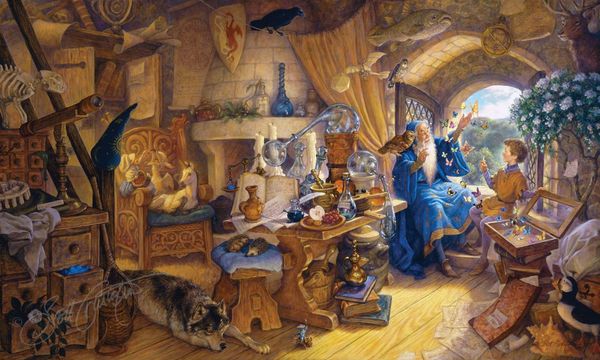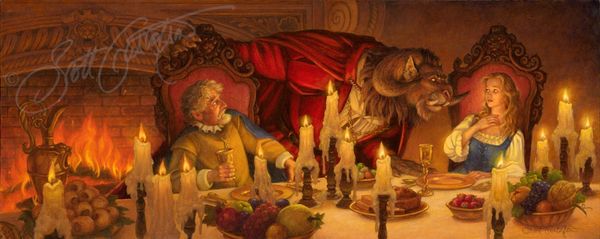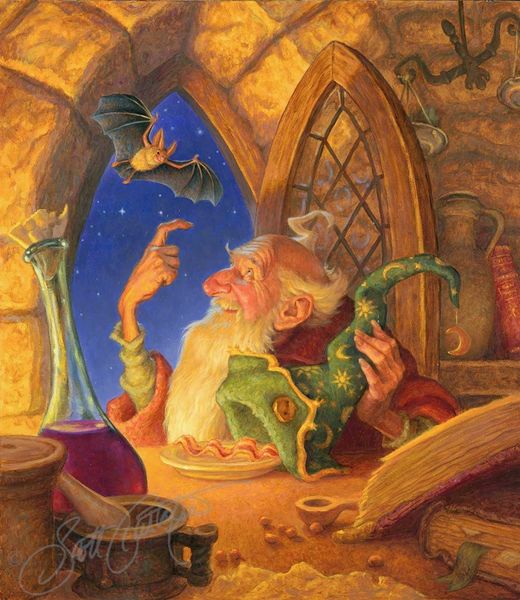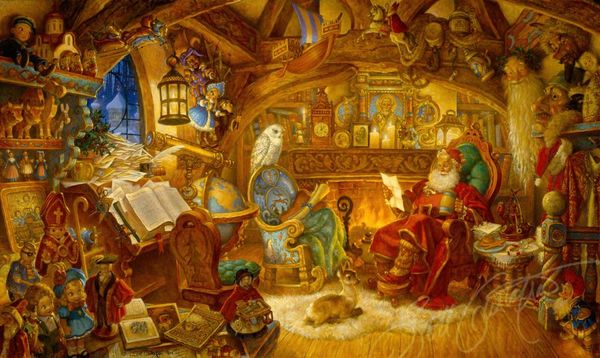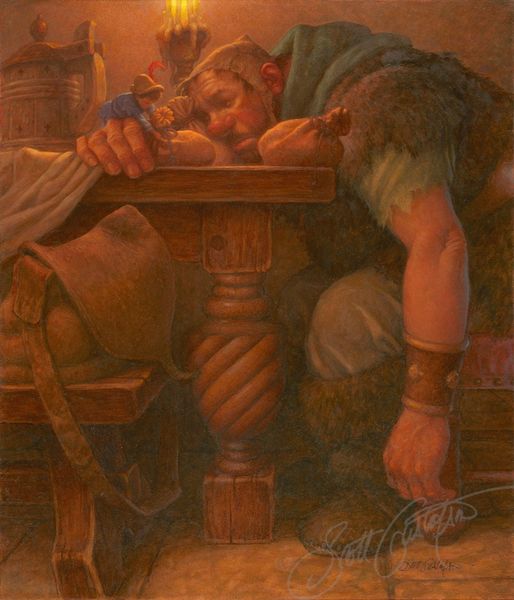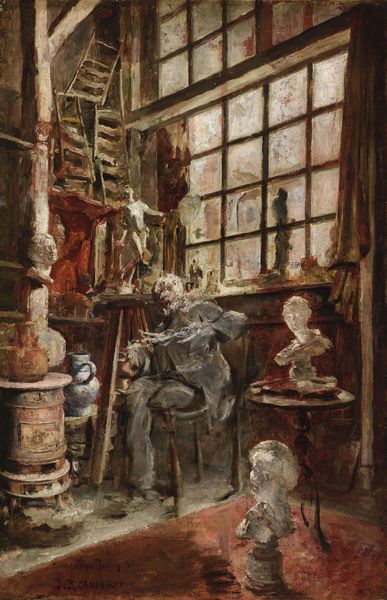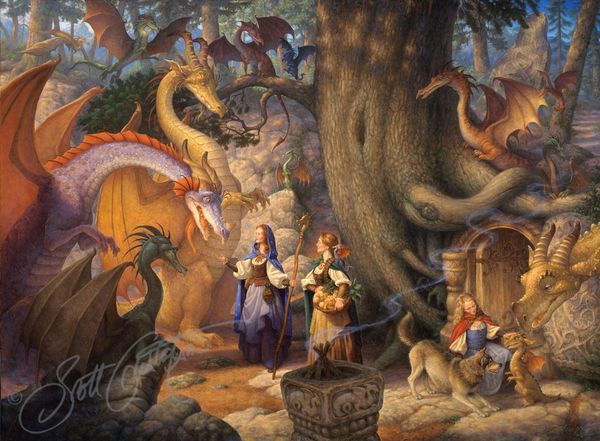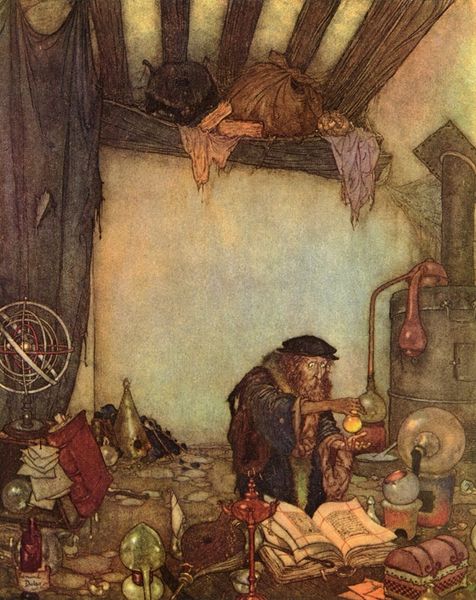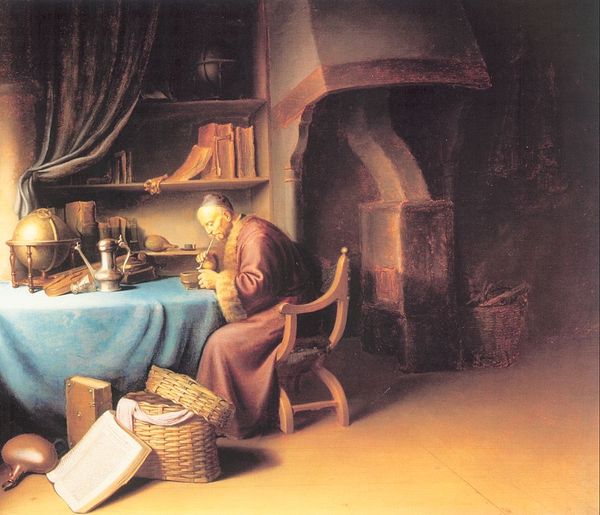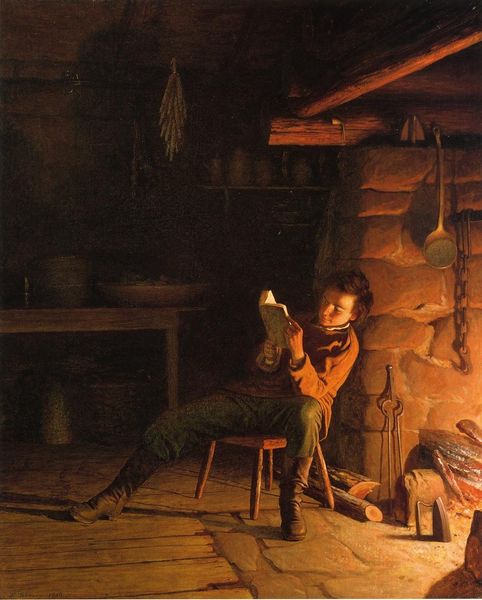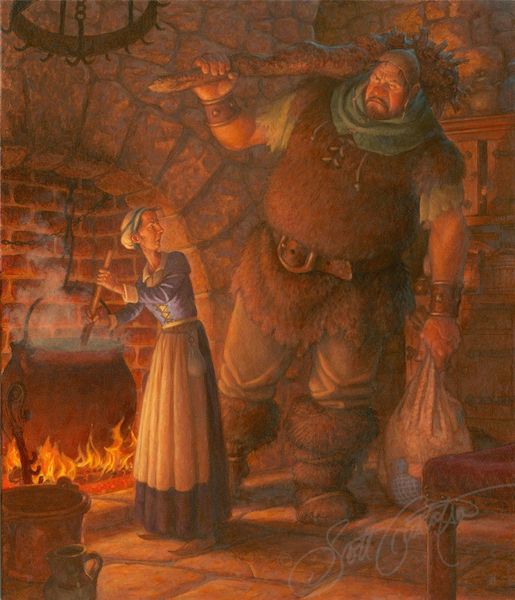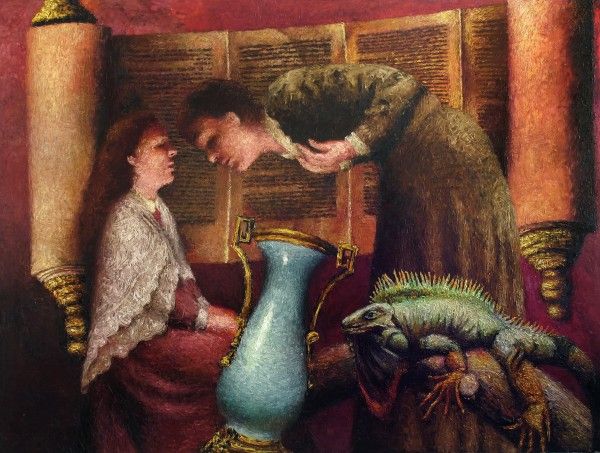
painting, gouache
#
gouache
#
narrative-art
#
fantasy art
#
painting
#
gouache
#
fantasy-art
#
figuration
Copyright: Modern Artists: Artvee
Editor: This is "A Dragon’s Tale" by Scott Gustafson, a gouache painting, although the exact date is not available. I'm immediately drawn to the incredible detail and the warm, inviting atmosphere created by all the candlelight. What historical or cultural context might have influenced such a captivating scene? Curator: It’s interesting that you use the word “inviting.” The artist has constructed a tableau referencing Renaissance and Baroque era depictions of scholars and alchemists. These historical representations, popularized through paintings and prints, were often funded by wealthy patrons and institutions who aimed to project an image of knowledge and control. The dragon element disrupts this, hinting at uncontrolled, even dangerous, knowledge. Consider how the accumulation of knowledge depicted here is not neutral but fraught with possible peril. How does that alter your reading of it? Editor: So, instead of just a cozy, academic scene, the dragon transforms it into something…potentially subversive? Does the presence of fantasy elements potentially challenge the traditional power structures associated with academic institutions of the past? Curator: Precisely. And consider the role of fantasy art as a genre. Its rise in popularity is inextricably linked with societal shifts. During periods of intense social change, fantasy provides a safe space to explore alternative realities, often reflecting anxieties or aspirations absent from mainstream discourse. Do you see elements of that here? Editor: Definitely! The old scholar could represent established institutions, while the baby dragon might symbolize emerging ideas, still fragile and somewhat hidden, subtly undermining the established order. Curator: A compelling reading! And thinking about art production, we can see how the circulation and appreciation of art are tied to institutions, publications, and audience expectations that enable fantastical scenes such as this. In addition, what do you think about art ownership? Does owning a tale or piece of history impact what and how things are produced or the perception? Editor: This makes me rethink how easily I accepted the image at face value. Now, I see layers of societal power dynamics at play within a visually pleasing scene. Curator: And that is exactly the power of analyzing art through a socio-historical lens. It moves us beyond simple aesthetics to understanding the complex relationships between art, power, and culture.
Comments
No comments
Be the first to comment and join the conversation on the ultimate creative platform.
